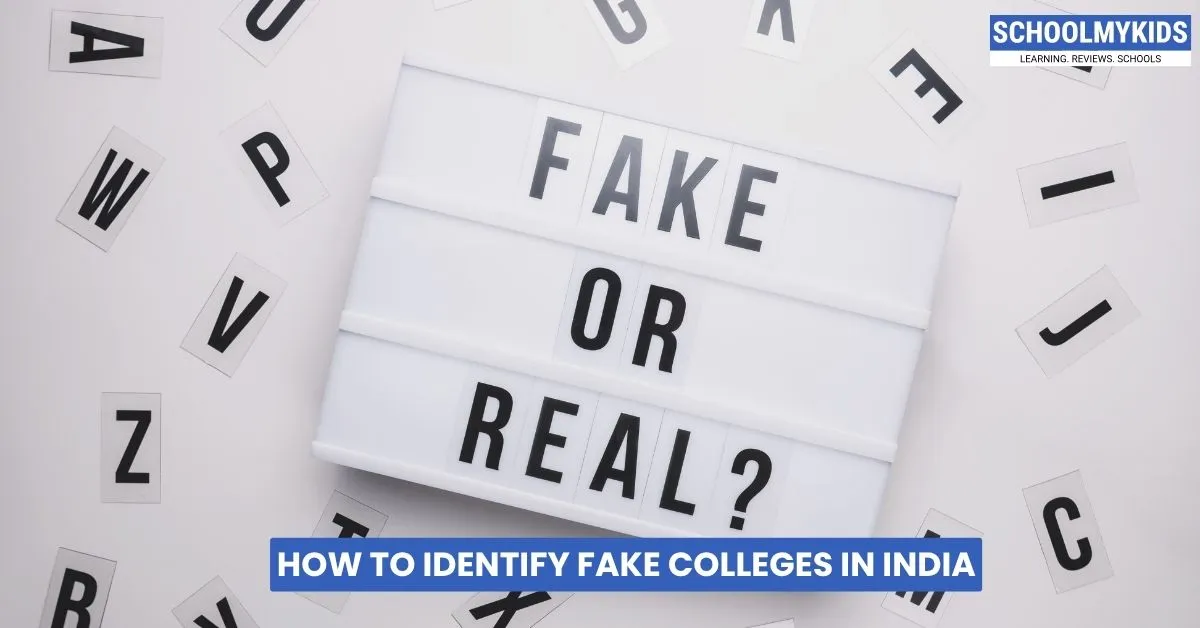The pursuit of higher education is one of the most critical journeys in a person's life, involving immense hope, effort, and financial investment. Unfortunately, this landscape is also fraught with peril in the form of fraudulent institutions and fake colleges that prey on the aspirations of students. In a country with tens of thousands of colleges, the responsibility to differentiate between the genuine and the fake falls squarely on the shoulders of the student and their family.
Falling for a fake college can lead to a devastating loss of time, money, and can render your qualifications worthless. This guide provides a clear, step-by-step checklist to help you identify fraudulent institutions and secure your academic future.
Step 1: The Golden Rule - Official Website Verification
This is the most crucial and non-negotiable step. All legitimate institutions in India are regulated by apex bodies. You must verify a college's recognition status on its official websites.
For Universities
Any institution that uses the word "University" in its name must be recognised by the University Grants Commission (UGC).
- Action: Go to the official UGC website at ugc.ac.in.
- Navigate to the "Universities" tab.
- Check the state-wise list of recognized universities. If the university is not on this list, it is not legitimate.
- As a cross-reference, also check the "Fake Universities" list, which is available in the "Public Notices" section of the same website.
For Technical Colleges (Engineering, MBA, Pharmacy, etc.)
Technical institutions and the courses they offer require approval from the All India Council for Technical Education (AICTE).
- Action: Visit the official AICTE website at aicte-india.org.
- Look for the "Approved Institutions" list, usually found under the "Statistics" or "Dashboard" section.
- You can search for the institution by name, state, and course to confirm its approval status for the current academic year.
For Other Professional Courses
Different professional fields have their own dedicated regulatory bodies.
- Medicine: National Medical Commission (NMC) - nmc.org.in
- Law: Bar Council of India (BCI) - barcouncilofindia.org
- Teacher Education: National Council for Teacher Education (NCTE) - ncte.gov.in
If an institution is not listed on the website of its relevant council, it is not authorised to grant a professional degree in that field.
Step 2: Scrutinize the College's Website and Documents
Fake colleges are often masters of deception online. You need to look for specific red flags.
Lack of Transparency
A genuine college is proud of its affiliations and will display its UGC recognition or AICTE approval letters prominently on its website, usually in the "About Us" or "Approvals" section. If you cannot find these official documents, consider it a major warning sign.
Analyze the Language
Fraudulent institutions use vague and misleading terminology to sound legitimate. Watch out for phrases like:
- "Recognized by UGC-GIA..." (This can be a made-up body).
- "In academic collaboration with a foreign university..." (This does not mean the degree is from that foreign university).
- "Approval is pending" or "Submitted for approval." This means they are NOT approved.
- "An autonomous body registered with the government." (This means nothing in terms of educational recognition).
Check the Website Domain
While not a foolproof method, most legitimate Indian academic institutions use a .ac.in or .edu.in domain names, as these have stricter eligibility requirements for registration. A generic .com or .org domain for a university should prompt you to investigate further.
Step 3: On-the-Ground Investigation
Never take admission in a college based solely on its website or a brochure.
Visit the Campus Physically
This is essential. A fraud college might have a great website but no real campus. Visit the address provided and check for actual infrastructure: a well-stocked library, functional laboratories, proper classrooms, and faculty offices. If the "campus" is just a few rooms in a commercial building, be very cautious.
Talk to Current Students and Faculty
The best way to get the real story is to talk to the people there. Speak to current students on campus (or find them on LinkedIn) and ask them about the quality of teaching, the examination process, and the validity of their degree in the job market. If the administration prevents you from interacting with students, it's a huge red flag.
Step 4: Beware of Unrealistic Promises
Fraud colleges prey on the anxieties of students. Their marketing pitches are often full of promises that are too good to be true. Be extremely wary of any institution that offers:
- "100% Guaranteed Admission" without considering your academic merit.
- "100% Placement Guarantee," especially with specific, high salary figures.
- A three-year degree course completed in one year or through a "single-sitting exam."
Conclusion: Your Future is in Your Hands
The process of choosing a college can be overwhelming, but a few hours of diligent research can save you from a lifetime of regret. The power to avoid educational fraud lies entirely with you. By systematically verifying information through official sources, scrutinising all claims, and conducting a physical visit, you can confidently distinguish a genuine institution from a fraudulent one and take a secure step towards your future.








Be the first one to comment on this story.